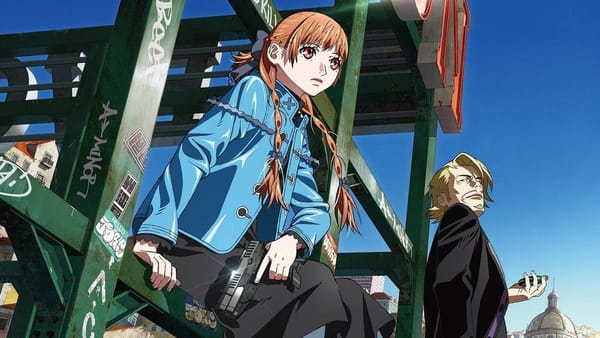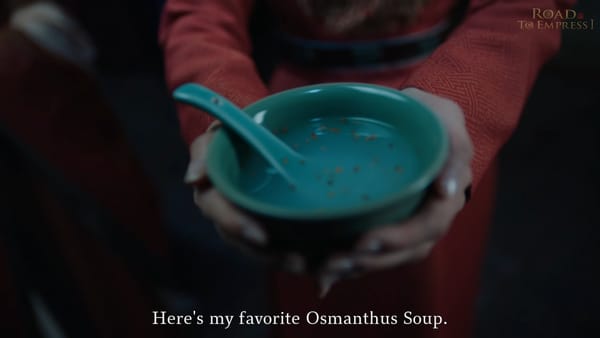16-Bit Sensation is a manga about making a 90s-2000s bishoujo game. 16-Bit Sensation: Another Layer is an anime that turns into one
It's got a whole other idea of video game dystopia, and it's not what you're thinking
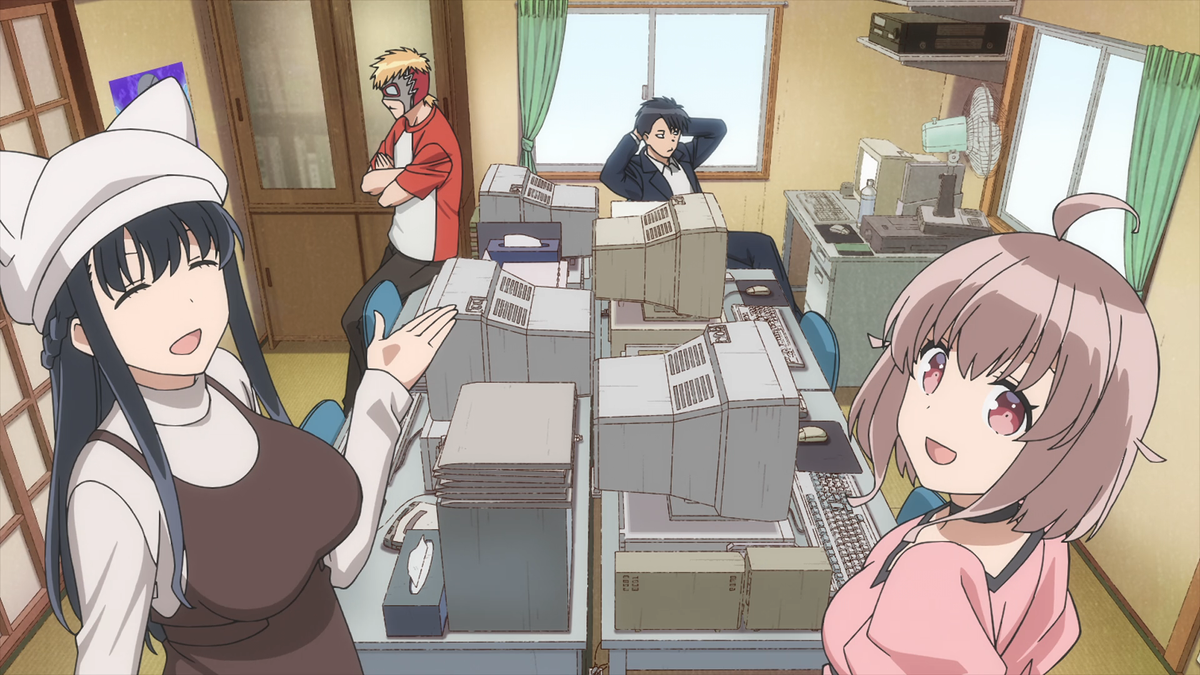
Today manga and light novels are the great creative swamps that feed the anime-industry machine, the primordial ooze of concepts from which multimedia behemoths emerge.1 About twenty years ago, though, every other anime TV series seemed to come from another source: bishoujo (pretty girl) PC games.
“Bishoujo” is a pretty wide net to cast, as like “anime” it’s more an aesthetic and a subculture than a genre. Bishoujo games aren’t all visual novels or text adventures… but a lot of them are. They don’t all use graphic sex as a selling point… but a lot of them do. There was a lot of creative freedom in this relatively out-of-view niche and as a result great stories being told and breakout characters being born. It’s not a surprise that the anime industry drew from them more and more over the years, peaking in the 2000s or so.
This was not a minor influence: star writer Gen Urobuchi (Madoka Magica, Thunderbolt Fantasy) cut his teeth on games so edgy they’d make Kyubey blush at prolific publisher Nitroplus2, and the massive Fate universe and its deep lore are well-known as having originated in 18+ visual novels.
An otaku generation later, the types of stories and characters you’d typically see in bishoujo games have also become quite prevalent in light novels— a much more accessible format than the $100 PC adventure game— and pretty soon the anime business was chugging its primordial ooze from online web fiction sites instead.
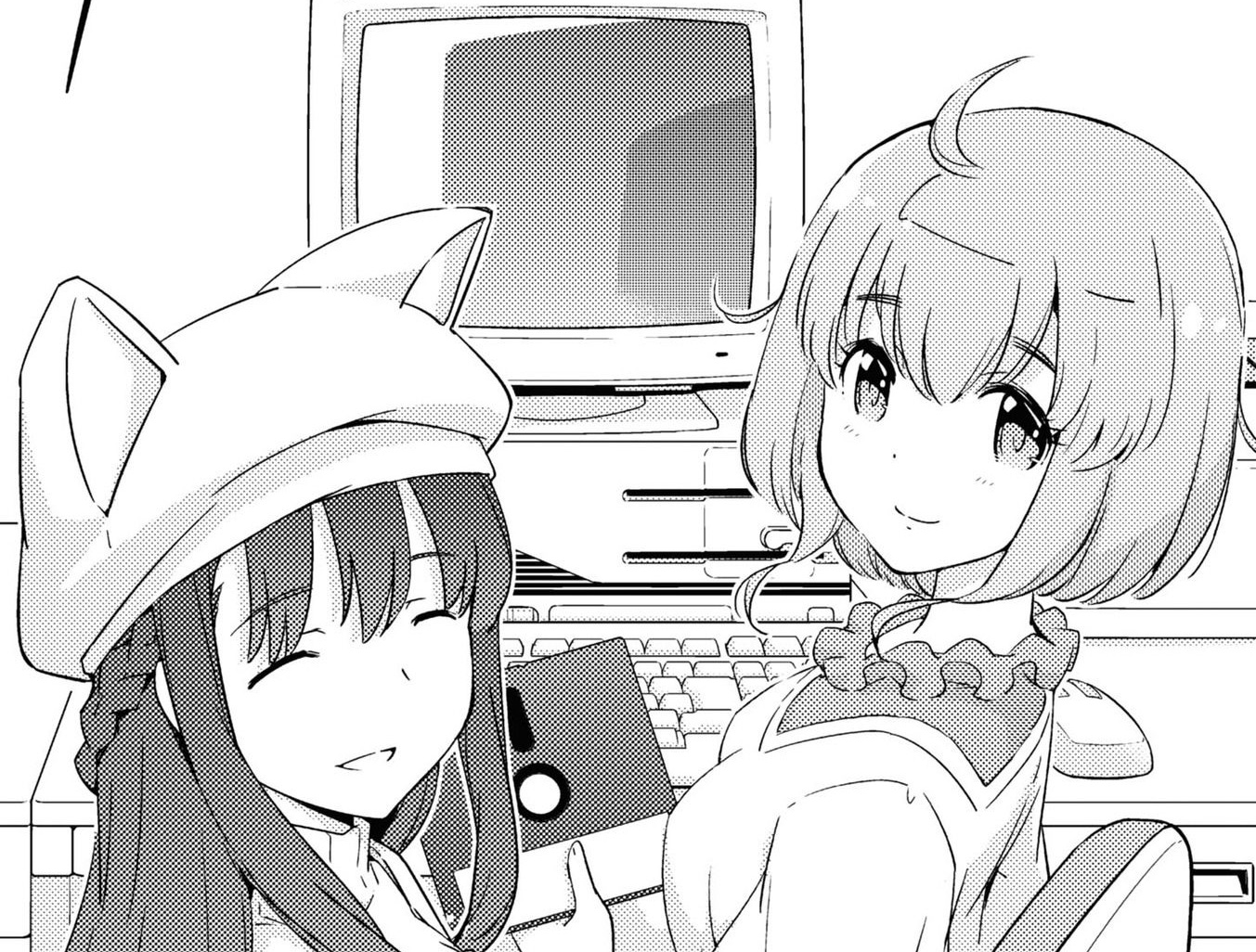
So, as 16-Bit Sensation puts forth, the bishoujo game age is kind of retro these days. Tamiki Wakaki’s self-published manga series is a heavily fictionalized look back at the scene over the years from people who’d definitely know: Aquaplus legends Misato Mitsumi (To Heart, Comic Party) and Tatsuki Amazuyu (To Heart, Utawarerumono) are credited for the concept. The fictionalized company protrayed is Alcohol Soft, named after Mitsumi and Amazuyu’s early gigs at Cocktail Soft (Pia Carrot series).
The manga is a very fun, crunchy, high-detail read for those of you who are into that kind of thing (me, for sure). The events might be strictly fictional, but the authors really want you to know what it was like back then, from how to do dithering effects, to copying hand-drawn art pixel-by-pixel, to having to make the censor mosaic bigger to please the ratings board.3
My favorite bit is early on, when the heroine goes through the logic behind buying a computer to play games on in the early 90s and realizes you’d only do it if you really, really wanted to play games with porn in them4.
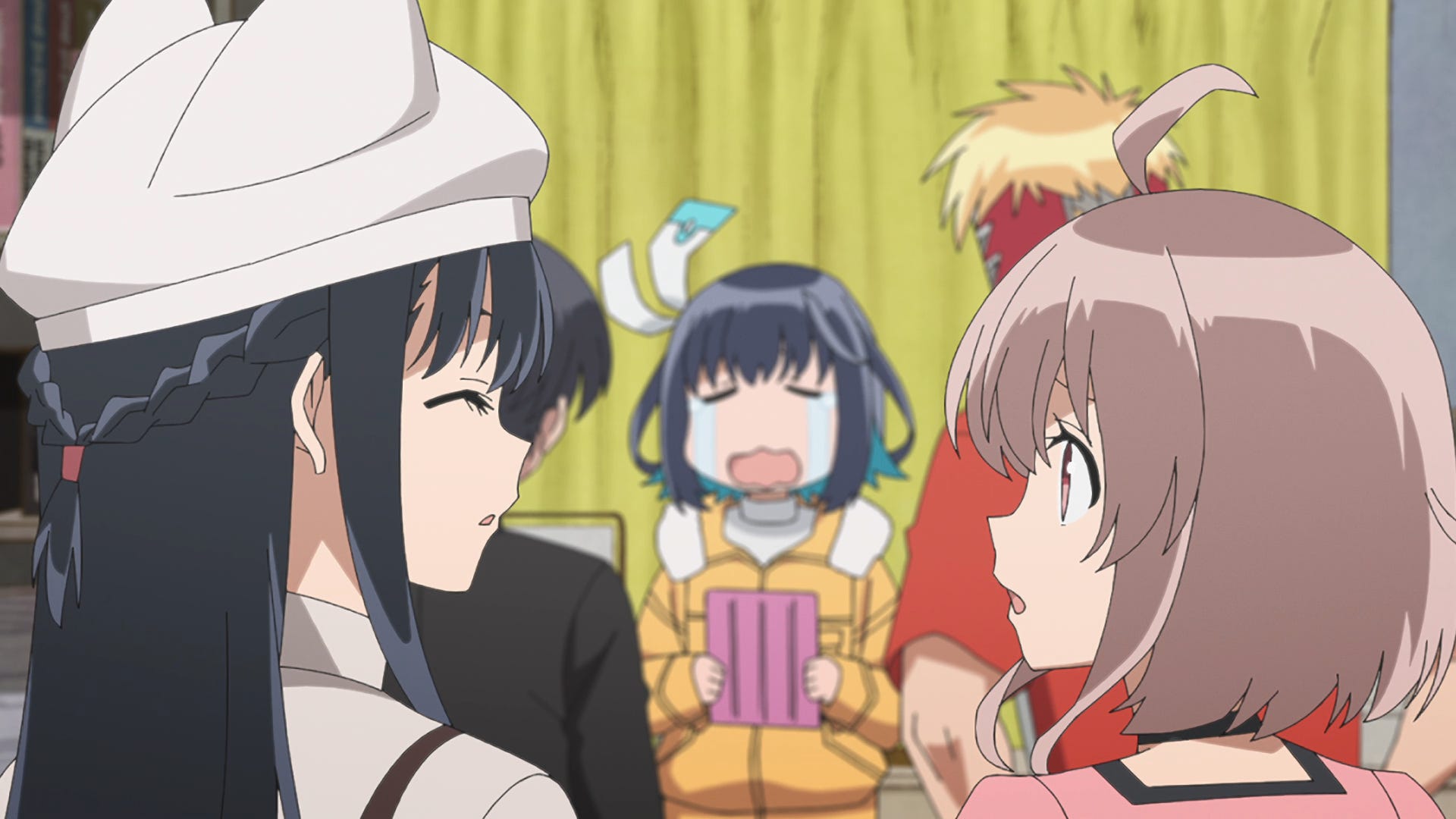
And at first, it seems like the anime adaptation, 16-Bit Sensation: Another Layer (SensationAL), is a pretty straight version of that shop-talk meta-comic. But instead of just repeating the material, the anime series goes another layer more meta and introduces a time traveler to bulldoze through its historical retelling. Halfway through the series, the story starts not just to diverge from the source material but take wild, unpredictable twists, transforming from a fictionalized narrative about the past of bishoujo game development into a dystopian speculation about its future.
The new main character for the anime series is an accidental time-traveler by the name of Konoha Akisato. It’s never really pointed out by the characters, but Konoha sticks out dramatically in the 90s otaku world she stumbles into. She’s got two-tone hair, she’s loud— so loud and so shrill that her voice may determine whether or not you are able to stand this show— and she possesses no apparent shame or secrecy regarding her love for 18+ games with cute anime girls. She looks and acts like she’s stepped out of one, in fact.
Konoha’s of a completely different generation of otaku5, and the fact that Konoha brings influences from 30 years into the future to Alcohol Soft inevitably begins to set the world of bishoujo games— as well her beloved Akihabara— onto a new timeline.
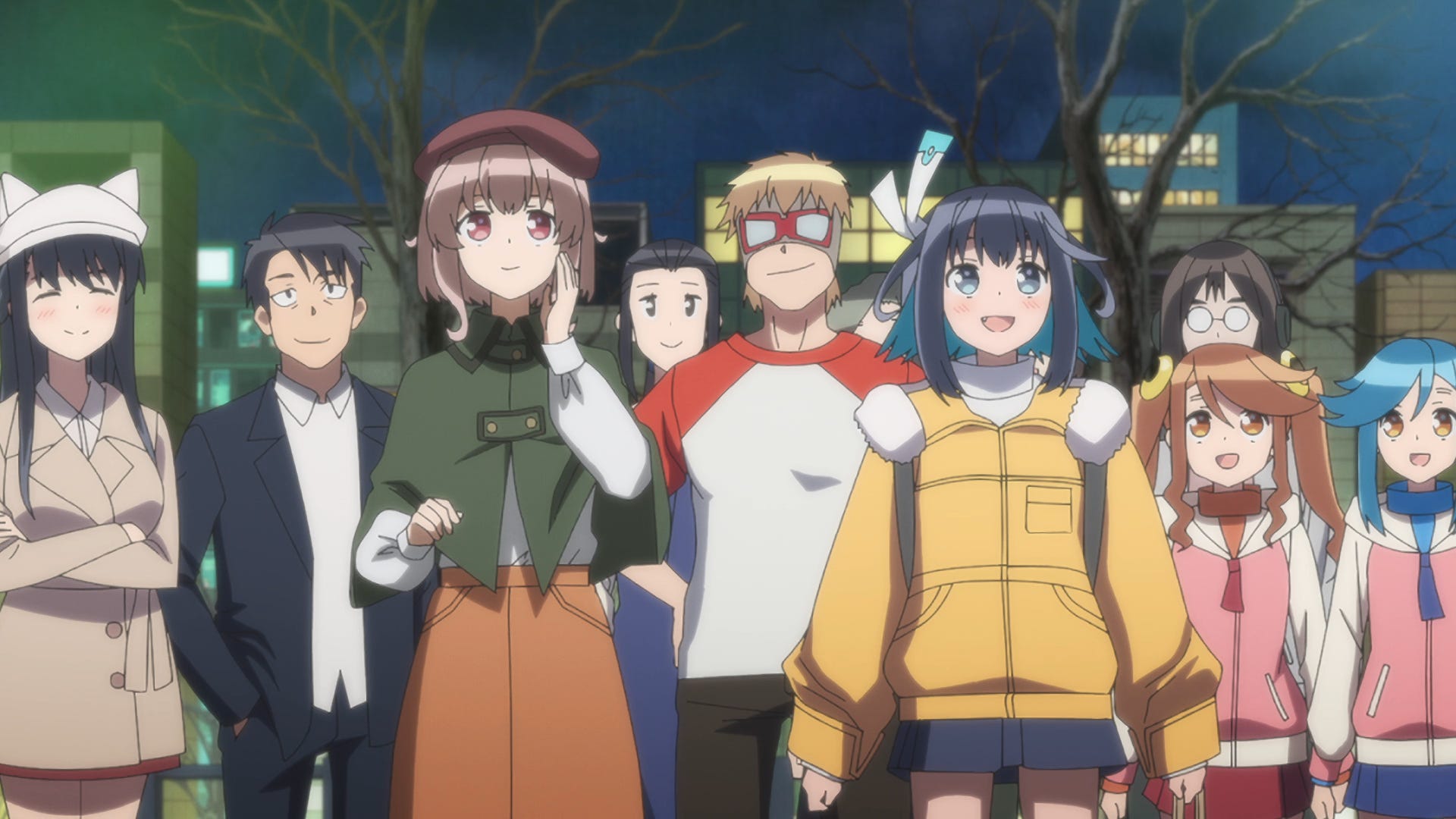
With the added element of Konoha— and the narrative aging up boy programmer ace Mamoru to serve as a love interest6— the history as depicted in 16-Bit Sensation begins to slowly but surely spin out of control. About eight episodes in, the show is completely unrecognizable, and “science fantasy” starts to look like a better term than “science fiction” for what the story is trying to sell us.
Written by another Leaf/Aquaplus veteran in Tatsuya Takahashi (Shizuku and Kizuato, some of the earliest “visual novels” to actually call themselves that), Another Layer is admirably crazy, spinning a simple chronicle of the creators’ early days into an unhinged sci-fi tale revolving around the nature of human creativity itself. What is it that makes a masterpiece touch us emotionally? When the credits roll and you say to yourself “I’ll never forget this one”, what was that you just experienced? Without giving away its twists and turns, I’ll tell you that Another Layer is deeply concerned with the secret sauce, and the ways in which the future will try to package it.

Completely unrecognizable by its finish, Another Layer reminds me of my own experiences in the 00s playing stuff like old C’s Ware games, Yu-No, even Tsukihime. The games present and sell themselves as simple prurient entertainment, and with the bait thus hooked they proceed to spin out into directions no player could ever have guessed. Another Layer sells itself as a bunch of cute girls in an office making a video game about cute girls, cute girls cute girls cute girls… and then it becomes dystopian sci-fi. I gotta respect it.
Listen, Kawaiikochans still has a shot… ↩
Nitroplus writers show up a lot in anime, look out for them. Again, Buddy Daddies is a good anime. ↩
Here’s something I didn’t know until I read 16-Bit Sensation: the Japanese PC/mobile ratings board, the EOCS, predates the American ESRB by two years. ↩
From what I’m personally aware of it’s that, or you were a programmer, or you were an arcade maniac— X68K featured similar hardware and thus many near-perfect arcade ports— or some convergence of the three. ↩
I’ve been getting more and more aware of my own generation gap, as a millenial nerd realizing I’m 15 years older than, for example, the people I play mahjong with ↩
Throughout, I was contrasting in my head the raunchy product Alcohol Soft was turning out versus the silent, chemistry-free pairing in the office. Kind of like shonen romance. ↩

